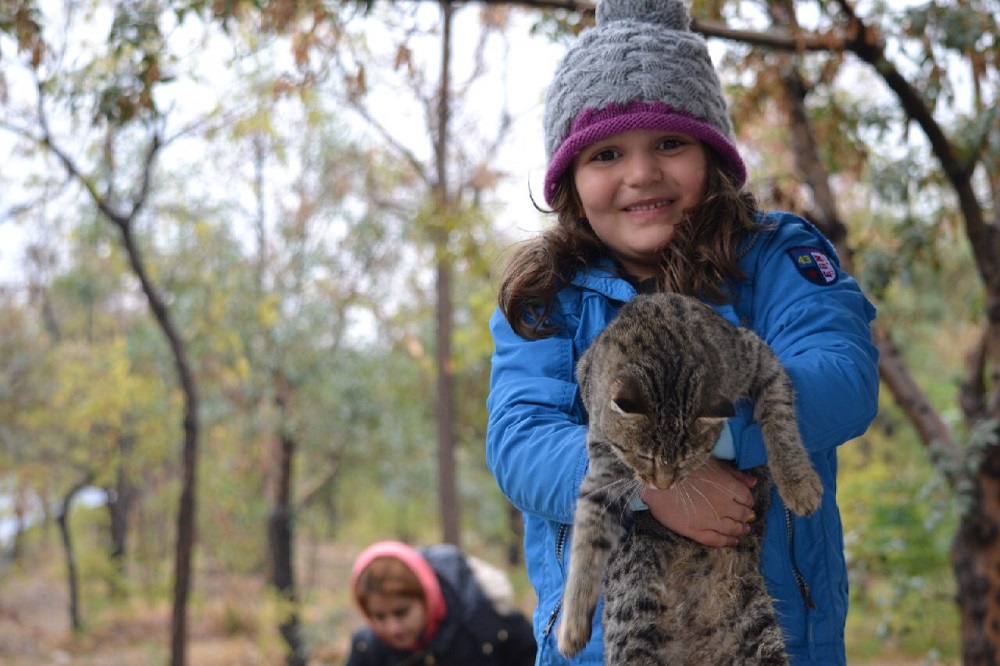Children are feeling the trunk of a tree with their eyes blindfolded; a happy smiling girl is cherishing a rabbit, and some other children are watering flowers planted in a corner in the yard. These are some of the pictures taken at a nature school in the country. There are no school benches, no books or pencils.
Three years ago, Iran’s first nature school opened in the shrine city of Mashhad, the capital of Khorasan Razavi Province. After that, slowly more schools were established in other cities, Salamat News reported.
“Two months ago with the inauguration of one more school, the total number of nature schools reached 29. We have planned to increase such schools to 1,000 over a five-year period” said Mohammad Darvish, deputy of education and public participation at the Department of Environment (DoE).
“The idea behind the schools is to encourage and inspire children of different ages through positive outdoor experiences. Most of the schools have been established in the vicinity of farmlands, near birds’ nesting places, trees, and other areas where wildlife can live in harmony alongside humans,” he said.
Nature-based programs cannot be provided in regular school settings and that is why the DoE is making every effort to increase such schools across the country. They also aim to develop self awareness, self regulation, intrinsic motivation, empathy, good social communication skills, independence, self esteem and confidence in children and adolescents, he said.
The schools have two guiding principles in their programs: connecting deeply with nature through practical participation, and exploring the environment as co-learners.
Educational Packages
In 2013, a memorandum of understanding was signed between the DoE and Education Ministry by which they were committed to establish nature schools in the country. At the time, the DoE developed the educational package to be used in schools for children and adolescents in the age groups 3 to 18.
At present, educational nature-based programs that provide a practical experience of the environment for children aged 3 to 12 are provided by trained nature teachers from DoE, State Welfare Organization (SWO) and University of Social Welfare and Rehabilitation Sciences in Tehran.
So far, 29 nature schools have been established in Kermanshah, Hamedan, East Azarbaijan, Gilan, Golestan, Mazandaran, North Khorasan, South Khorasan, Isfahan, Fars, and Tehran provinces.
There are three nature schools in Tehran Province located in Gilanvand, (Damavand County), Lavasanat (Shemiranat County) and Birds Garden in east Tehran (Hengam Street).
Two more schools are planned in Pardisan Park (northwest Tehran) and Azadi Sports Complex on the western flank.
According to Darvish, each school should be established on land with area of at least two hectares. Children under the age of seven can be enrolled fulltime in the schools (instead of being enrolled in kindergartens). Teacher-to-student ratio is 1 to 5. Nature teachers have been employed to supervise and give an appropriate direction to children’s activities in the environment; student-driven activities surpass teacher-directed programs.
Children over the age of seven from other schools can visit the nature schools for half a day per week. Children can be brought to the schools by their parents or by their regular school teachers, Darvish said. “This way, regular schools can integrate nature education into their curriculum.”
The development of nature schools in Iran has lagged behind the rest of the world. The first nature preschool in the US opened in 1967.


